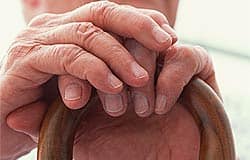|
Unlike rheumatoid arthritis, which is characterized by systemic inflammation, osteoarthritis is a localized disease that occurs only in the affected joints.
With osteoarthritis, the thin layer of cartilage between the joints gradually erodes and wears away. As the protective layer of cartilage vanishes, the bone beneath becomes pitted and uneven, and the structural integrity of the joint is destroyed. Movement can become extremely painful and, in the worst cases, people who have severe osteoarthritis can no longer take care of themselves on a day-to-day basis.
Chondroitin sulfate is a major structural component of articular cartilage. It is a very large molecule, composed of repeated units of glucosamine sulfate. Like glucosamine, chondroitin sulfate stimulates the production of cartilage. Likewise, it has the ability to prevent enzymes from dissolving cartilage. Chondroitin sulfate inhibits free radicals that degrade joint cartilage and collagen. It improves blood circulation to joints, which enables antioxidants and glucosamine to enter inflamed joints to stimulate the repair process required for the regression of osteoarthritis. Although the intestinal absorption of chondroitin sulfate is much lower than that of glucosamine (10 to 15 percent versus 90 to 98 percent), a few studies have shown very good results (reducing pain and increasing range of motion) from long-term treatment with chondroitin sulfate.
A 3-year study investigated the effects of 800 mg of chondroitin sulfate on a group of people with osteoarthritis of finger joints. The results indicated that the chondroitin sulfate was well tolerated, significantly reduced pain, and increased joint mobility. In addition, the joints were protected from further erosive osteoarthritis (Verbruggen G et al 1998).
Improvement in walking time was studied in 80 patients with osteoarthritis of the knee. In this 6-month, double-blind study, the chondroitin sulfate dosage was 400 mg twice daily. The minimum time to perform a 20-meter walk showed a constant reduction of time only in the group who took chondroitin. Lower consumption of pain-killing drugs and excellent tolerability was also observed (Bucsi L et al 1998).
|













